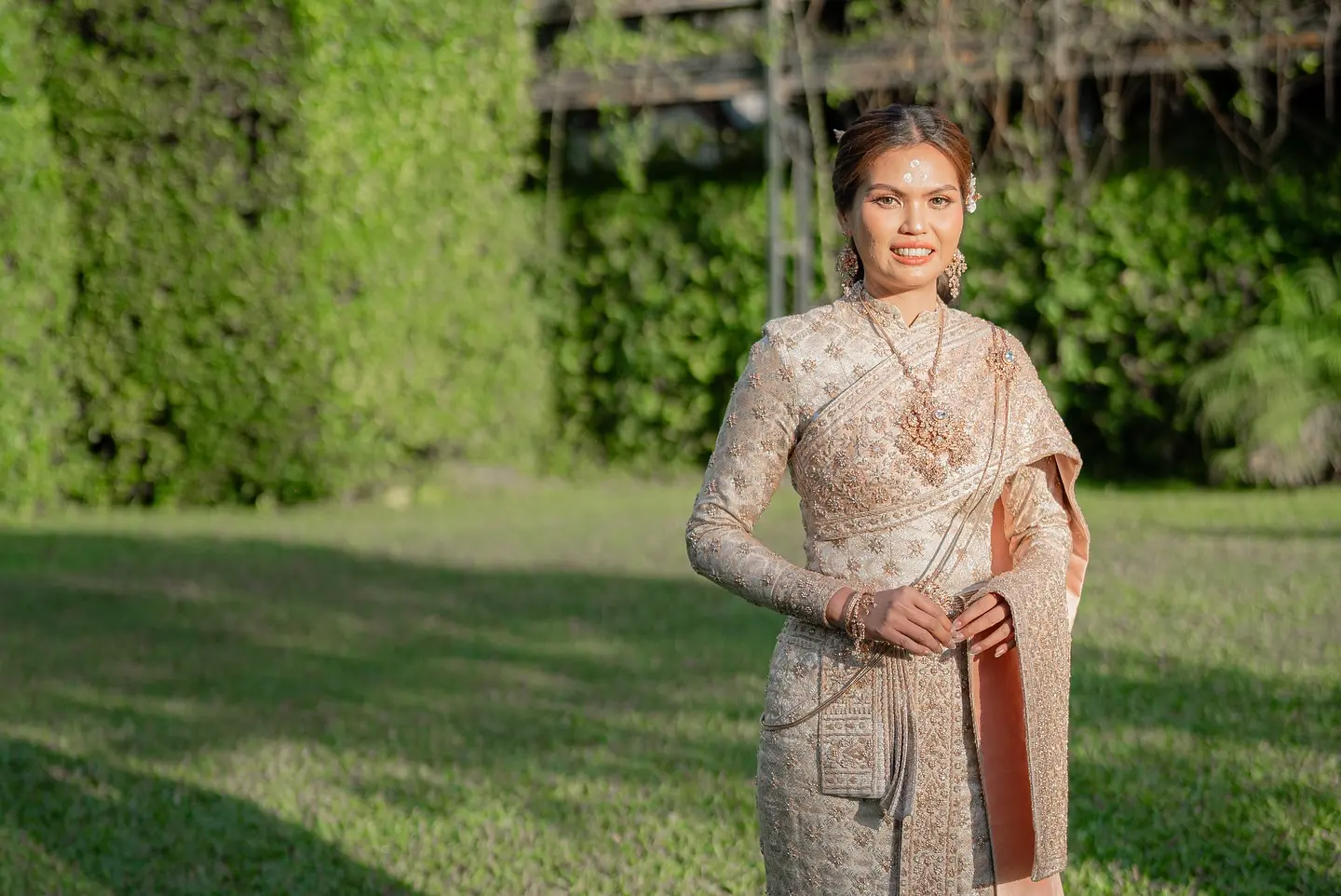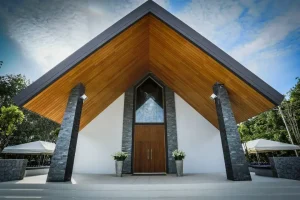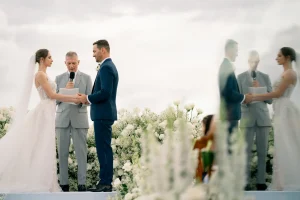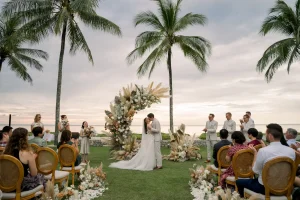Traditional Thai wedding dresses are a testament to Thailand’s rich cultural heritage, embodying centuries of artistry and tradition. While some Thai brides may opt for Western-style gowns, many still choose to honor their roots by wearing traditional Thai attire, especially during ceremonies that incorporate customary rituals. Interestingly, some foreign couples who get married in Thailand also seek to embrace local traditions by incorporating Thai elements into their ceremony, and in some cases, they even choose to wear Thai wedding dresses. This guide explores different styles of Thai wedding dresses, color choices, and modern twists to help brides find their perfect look.
Traditional Thai Wedding Dress Styles
Traditional Thai wedding attire encompasses several distinct styles, each reflecting different regions and historical periods. Here are some of the most renowned styles:
- Thai Siwalai: This formal ensemble (see first photo) features a sabai (a traditional shawl) paired with a sinh (wrap skirt) crafted from luxurious gold brocade silk. The outfit is completed with traditional pleating and a gold belt, exuding elegance and sophistication.
- Thai Chakri: Known for its classic appeal, the Thai Chakri style (see second photo) includes a diagonal sabai draped over one shoulder, combined with a pleated wrap skirt and gold belt. This design is particularly flattering, as the sabai can be adjusted to enhance various body types, offering both coverage and grace.
- Thai Chakraphat: An elevated version of the Chakri, the Chakraphat style incorporates gold brocade fabric with intricate borders. It features a layered sabai, with the upper layer adorned in detailed embroidery, presenting a regal and majestic appearance.
- Thai Dusit: Departing from the use of the sabai, the Thai Dusit style showcases a fitted top with a boat neckline and sleeveless design. Embellished with silver or gold threads, pearls, and beads, and paired with a gold belt, this style accentuates the bride’s figure while maintaining traditional elegance.
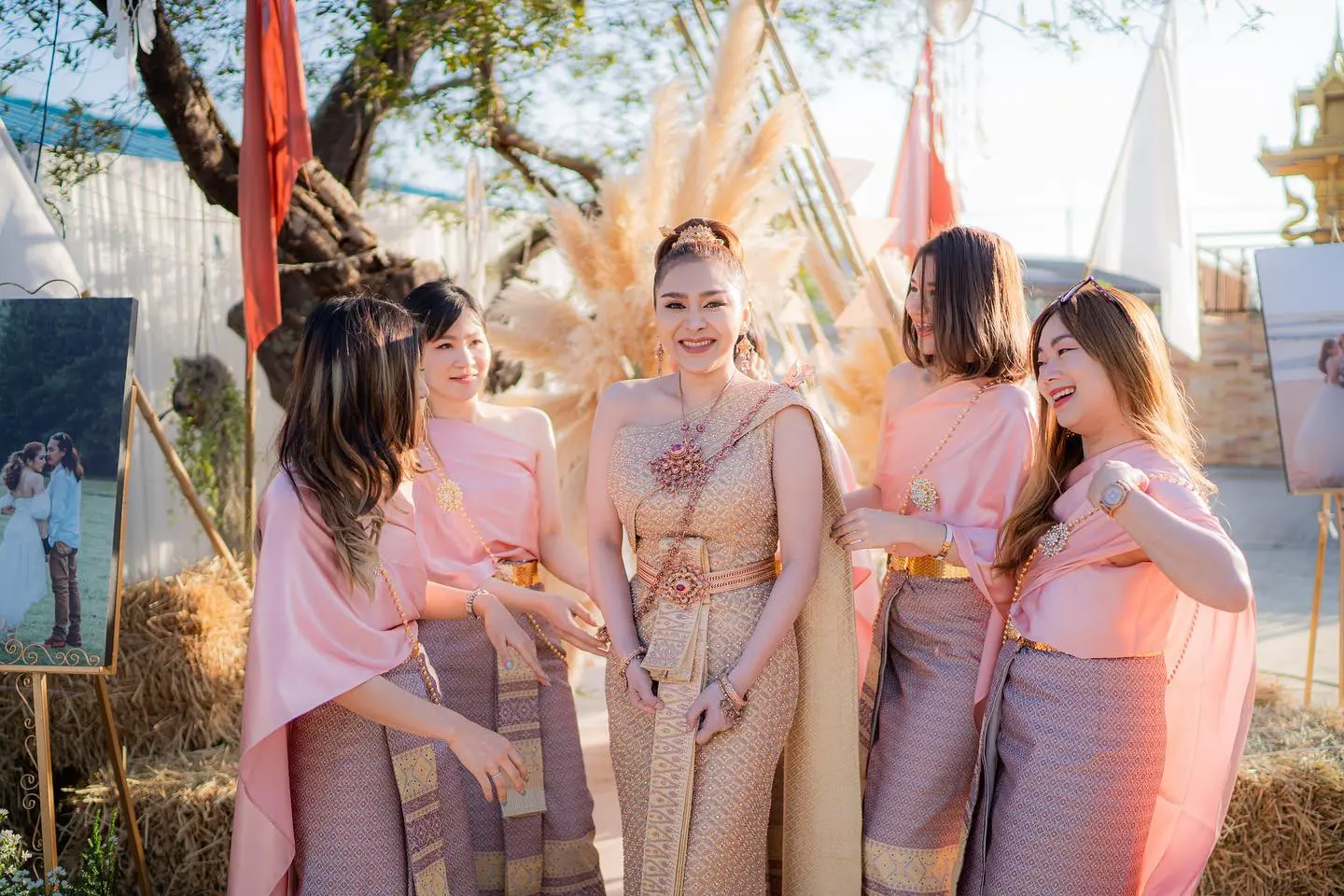
Color Considerations
Unlike the conventional white of Western weddings, traditional Thai wedding dresses embrace a spectrum of colors, allowing brides to select hues that complement their complexion:
- Darker Skin Tones: Shades like cream, beige, and gold enhance the natural radiance of deeper skin tones, creating a luminous effect.
- Pale Skin Tones: Opting for a skirt in a slightly darker shade than the top, while staying within the same color family, can provide a harmonious and balanced look.
- Pink Undertones: Colors such as gray, purple, or navy offer a striking contrast, enriching the bride’s natural blush.
- Golden Undertones: Brides with warm, golden undertones have the versatility to wear a wide range of traditional colors, each enhancing their natural glow.
Modern Adaptations
Contemporary brides often seek to blend tradition with personal style, leading to modern adaptations of classic Thai wedding dresses:
- Simplified Sabai: Some brides choose to streamline the patterns and draping of the sabai for a more modern and minimalist aesthetic.
- Modified Necklines and Sleeves: Adjusting the neckline or sleeve length allows brides to honor traditional designs while ensuring comfort and personal preference.
- Incorporation of Western Elements: Integrating features such as lace overlays or different fabric choices can create a unique fusion that reflects both Thai heritage and contemporary bridal fashion.
When selecting a Thai wedding dress, the key is to find a balance between honoring cultural traditions and expressing individual style. Whether embracing a classic design or opting for a modern twist, the chosen attire should make the bride feel confident, beautiful, and connected to her heritage on her special day.
Photography by Adam Phototales

